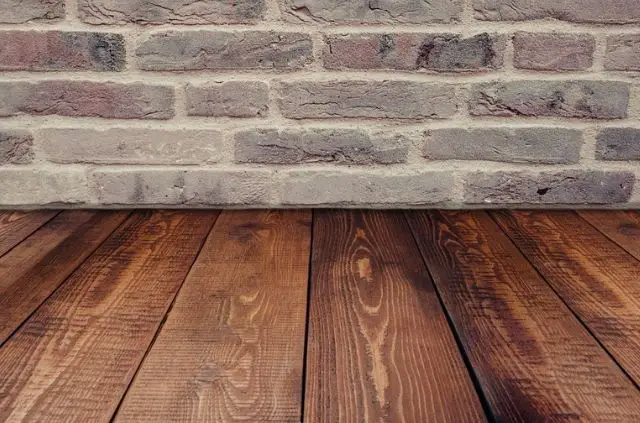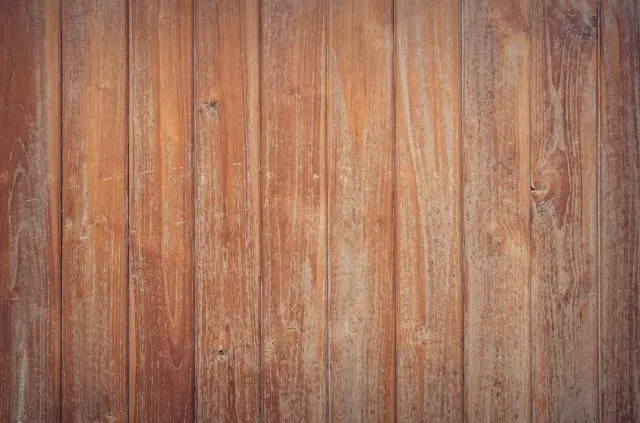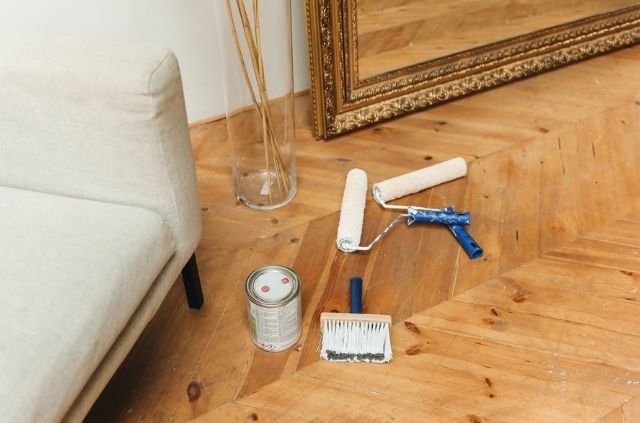Can You Put Vinyl Flooring Over Laminate?
Vinyl and laminate are just some types of materials you might find in a house. This brings us to the following question: can you put vinyl flooring over laminate?
The answer is not so simple. Technically yes, you can put vinyl flooring over laminate – but this should be avoided. This practice can cause more harm than good in the long run.
For starters, vinyl will install better when glued to wood. But you also don’t want to lay down vinyl on uneven laminate flooring to begin with. Learn more about why you shouldn’t do this below.
Vinyl Flooring vs Laminate
Before discussing why you shouldn’t put vinyl flooring over laminate, let’s talk about how the two are different. Vinyl is a type of plastic, or PVC material.
It’s offered in rolls, sheets, and interlocking planks. Vinyl flooring is also budget friendly, which makes it a great option for homeowners who want to save money on a new floor.
Laminate on the other hand is a multi-layer synthetic material. It’s held together with a lamination process during manufacturing. Laminate can also be made to look like wood with a photographic layer.
Can You Put Vinyl Flooring Over Laminate?
Now that we understand the key differences between the two, let’s go over the installation process. Specifically with the following question: can you put vinyl flooring over laminate?
Adhesive Issues
All types of vinyl flooring get installed with adhesive. The glue is placed between the vinyl sheets and wooden floorboards. The problem with installing vinyl over existing laminate is that it will not properly bond the two materials together.
Anyone familiar with laminate flooring knows how slippery the surface can be. When you attempt to place a new surface over it, problems will arise.
The glue will not be able to bond to the laminate and the vinyl will shift when people walk on it. The sheets will also being to shift and even lift up when the adhesive dries.
Leveling Problems
You’re going to run into problem anytime you try to put a new layer over an existing one. This is almost guaranteed when attempting to install vinyl flooring over laminate.
The issue is that for vinyl to be installed correctly, it must be on a completely flat surface. You not only need to tear out existing flooring, but you also need to use a scraper tool to remove residual glue.
Even small amounts of dirt and other contaminants can cause an uneven surface. They may look small at first, but over time these areas can expand with water, heat, and other things.
Future Headaches
Even when successfully installing vinyl flooring over laminate, you’re only creating future headaches for yourself. The next time you go to replace the floor, there will be even more work.
Similar to roofing, you can only put a new layer over an existing one so many times. For roofs it comes down to a weight issue, as a house can only support a certain amount of weight.
But with flooring, you eventually need to get the job done right. When the time comes, you will need to tear out the laminate and vinyl layers, before installing new material.
How to Remove Laminate Flooring
Removing laminate flooring can be done in just a few easy steps. If you want to save the material and use it in another room, don’t forget to be careful when uninstalling it.
1. Clear Out Furniture
Before tearing up the original laminate, make sure to move all large objects out of the room. This will make things much easier during the installation, as you won’t have to work around these items.
If you’re replacing kitchen laminate, don’t forget to unplug the dishwasher and refrigerator before moving. Due to the size and weight of these objects, it’s better to move them with another person.
2. Take Off Baseboards
You will need to remove the baseboards before touching the laminate. This will allow you to pick up the sections that are close to the wall. The safest way to do this is by using a pry bar and rubber mallet.
Place the pry bar between the baseboard and wall. Then gently tap on the top of the pry bar with your rubber mallet. This piece of wood is held in with small nails, so removal should be easy.
3. Remove Entry Strips
If your house has different types of flooring in each room you will need to remove transition, or entry strips. These sections split up the floor and they are located between doorways.
Transition strips are most common in areas where laminate meets carpet. Depending on the type, you can either pull them up, or unscrew them. This can be done much quicker with a cordless screwdriver.
4. Remove Laminate
Now that the baseboards and entry strips have been dealt with, it’s time to remove the laminate. There are two types of laminate you might have. The first is interlocking strips, which is much easier to remove.
The second (and older) type of laminate gets glued to the floor. This is more common on older houses and you won’t be able to reuse the material again. You will need to use a pry bar, or a scraper to for this removal.
5. Clean Adhesive
This step only applies if you’re working with older laminate that has been glued down to the floor. Even after the strips have been removed, there will be some adhesive residue left on the ground.
This can be difficult to clean up, but using a scraper tool is the easiest way to remove it. You could also try using a pry bar and hammer, to clean up larger pieces that have become caked onto the floor.
Get the Job Done Right
At the end of the day, putting vinyl flooring over laminate is a shortcut. This is a fact you might not want to hear, but it’s critical to get the job done right the first time.
This will not only make the end result look much better, but it will also make your work last longer. The truth is, removing existing laminate beforehand will only cost you more time – not money.
So, why not take that time to create and install a professional looking floor? It doesn’t matter if you’re a homeowner, landlord, or real estate investor. When you get the job done right it will pay off in the long run.
Search Terms
- Can you put vinyl flooring over laminate?






